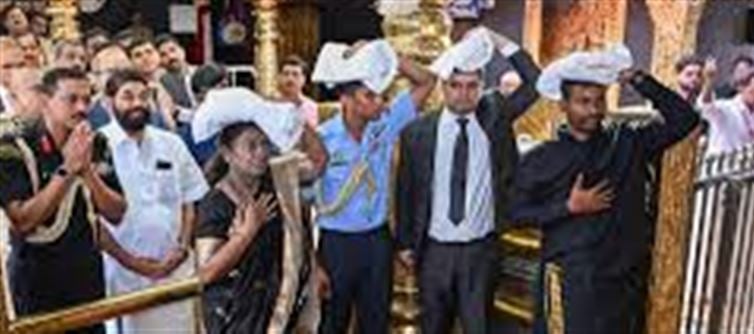
In a landmark moment for india, President Droupadi Murmu made history by becoming the first woman President of india to visit the revered Lord ayyappa shrine at Sabarimala, located in Kerala’s pathanamthitta district. This visit carries deep cultural, social, and political significance, symbolizing progress, inclusivity, and reverence for the nation’s diverse spiritual heritage.
Breaking New Ground: A First for a Woman President
Sabarimala temple is one of the most famous and traditionally significant Hindu pilgrimage sites in india, attracting millions of devotees every year. It is especially known for its rigorous observances and unique customs. Historically, the temple’s traditions have been intertwined with complex gender-based practices, including age-related restrictions on women entering the sanctum.
President Murmu’s visit marked the first time a woman holding the highest constitutional office of india offered prayers at this sacred shrine, signaling a powerful message of equality and respect for all devotees irrespective of gender or position.
Upholding Cultural and Spiritual Values
President Murmu’s visit was not just ceremonial but also deeply rooted in spiritual devotion. Her participation in the worship and rituals at sabarimala highlights the importance of honoring diverse religious traditions in India’s pluralistic society.
By visiting this iconic temple, the President underscored the significance of mutual respect among different faiths and communities. It was a moment that transcended politics, focusing instead on unity and shared cultural identity.
Promoting Social Harmony and Inclusion
The visit sends a strong message of inclusion and social harmony. As India’s first tribal woman President, Droupadi Murmu’s presence at sabarimala resonates with millions who see her as a symbol of empowerment and representation of marginalized communities.
Her visit reinforces the ideals of democracy where faith and governance coexist, promoting equal access and respect for all traditions. This step is particularly meaningful against the backdrop of ongoing debates around gender rights and religious practices associated with the temple.
Political and Symbolic Importance
President Murmu’s pilgrimage to sabarimala carries political symbolism as well. It reflects the government’s intent to bridge traditional beliefs with contemporary values, balancing respect for heritage with evolving social norms.
As the ceremonial head of the nation, the President’s actions influence public sentiment and discourse. Her historic visit has been widely appreciated across political and social spectra as a progressive step that honors India’s spiritual fabric while championing inclusivity.
The Path Ahead: Inspiring Generations
This historic visit is likely to inspire future leaders and citizens alike to embrace the richness of India’s cultural and spiritual diversity without prejudice. It encourages breaking stereotypes and barriers, fostering respect for all traditions while promoting gender equality.
President Murmu’s presence at sabarimala will be remembered as a milestone in the ongoing journey toward an inclusive and harmonious india where everyone’s faith and dignity are celebrated.
In Conclusion:
President Droupadi Murmu’s visit to sabarimala temple is more than a religious event — it is a symbol of progress, empowerment, and unity. As the first woman President to offer prayers at this revered shrine, she has set a precedent that blends India’s rich traditions with the spirit of modern inclusivity, inspiring the nation to move forward with respect and harmony.
Disclaimer:
The views and opinions expressed in this article are those of the author and do not necessarily reflect the official policy or position of any agency, organization, employer, or company. All information provided is for general informational purposes only. While every effort has been made to ensure accuracy, we make no representations or warranties of any kind, express or implied, about the completeness, reliability, or suitability of the information contained herein. Readers are advised to verify facts and seek professional advice where necessary. Any reliance placed on such information is strictly at the reader’s own risk.




 click and follow Indiaherald WhatsApp channel
click and follow Indiaherald WhatsApp channel